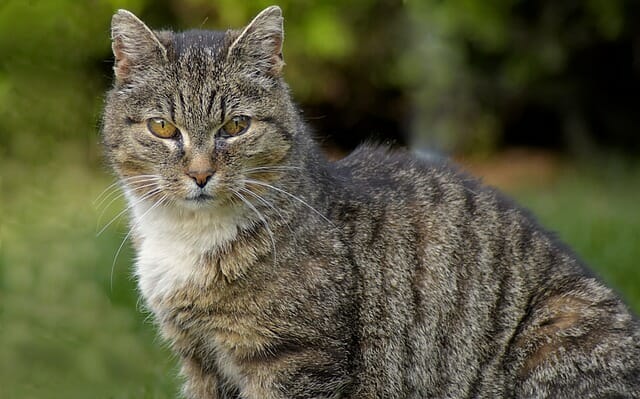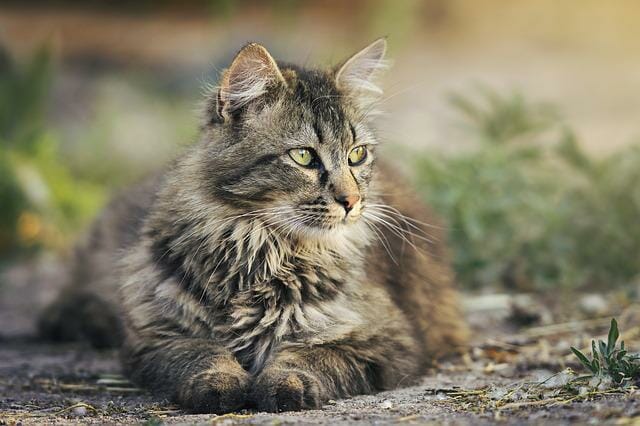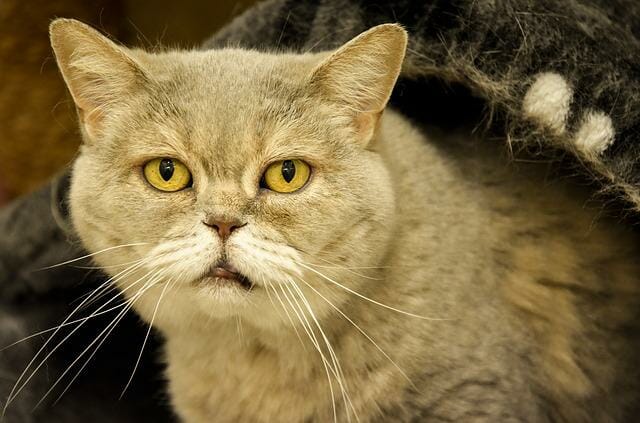How Are Cat Years Calculated: What You Need to Know About Cat Age
Cat years are a way of calculating a cat’s age in human terms. The general formula for calculating cat years is based on the fact that cats mature more quickly than humans in their early years but then age more slowly as they get older. A common rule of thumb is to consider the first year of a cat’s life equivalent to 15 human years, the second year as equivalent to 9 human years, and each year after that equivalent to about four human years.
Table of Contents
Understanding How Cats Age
Kitten


A kitten is a young cat between 0-12 months old. During this time, kittens go through a rapid period of growth and development, both physically and mentally.
Physically, kittens start as tiny, helpless creatures that rely completely on their mother for food, warmth, and protection. As they grow, they start to develop coordination and motor skills and begin to explore their environment.
Mentally, kittens learn to interact with other cats and humans and develop social and communication skills. They also learn basic behaviors, such as litter box use and grooming.
Adult
An adult cat is a cat that is between the ages of 1-8 years old. During this stage of life, cats are considered to be in their prime and are usually the most active and energetic.
Physically, adult cats have reached their full size and weight and are generally in good health. They have a strong immune system and are less vulnerable to some of the health problems that can affect kittens and senior cats.
Mentally, adult cats have established their personalities and preferences. They are usually well-socialized and have learned how to communicate and interact effectively with their owners and other cats.
It’s important to continue providing proper care and nutrition to adult cats during this time to maintain their health and well-being. This includes regular veterinary check-ups, a balanced diet, plenty of exercise, and mental stimulation through playtime and other activities. It’s also important to monitor adult cats for any changes in behavior or health, as early detection of potential issues can lead to better outcomes.
Senior
A senior cat is a cat that is between the ages of 8-12 years old. During this stage of life, cats are considered to be in the “golden years” and may start to show some signs of aging.
Physically, senior cats may start to experience a decline in mobility and may be more prone to health issues such as arthritis, dental problems, and kidney disease. They may also experience changes in their vision and hearing, and their coat may become less shiny or thick.
Mentally, senior cats may become less active and spend more time sleeping. They may also become less interested in playtime or other activities they enjoyed when they were younger.
It’s important to provide extra care and attention to senior cats to help them age gracefully and maintain good health. This includes regular veterinary check-ups, a balanced diet appropriate for their age and health, and plenty of opportunities for relaxation. Providing mental stimulation through playtime and other activities appropriate for their age and physical abilities is also important. Additionally, senior cats may benefit from supplements or medications to help manage age-related health issues.
Geriatric
They are considered to be in the last stage of life and may experience various health issues associated with aging.
Physically, senior cats may experience a significant decline in mobility and may be more prone to health issues such as arthritis, kidney disease, and cancer. They may also experience changes in their vision and hearing, and their coat may become less shiny or thick. In addition, senior cats may experience weight loss, muscle mass loss, and appetite changes.
Mentally, senior cats may become less active and may spend more time sleeping. They may also become less interested in playtime or other activities they enjoyed when they were younger. Additionally, they may become less responsive to their owners and more withdrawn or affectionate.
Reasons Why Outdoor Cats “Age” Faster


- Increased environmental factors: Outdoor cats are exposed to various environmental factors such as extreme temperatures, UV radiation from the sun, and air pollution. This exposure can lead to damage to their skin, coat, and internal organs, which can contribute to the appearance of aging.
- Increased risk of injury: Outdoor cats are more likely to experience injuries from fights with other cats, being hit by cars, or other accidents. These injuries can have a significant impact on their health and can contribute to a faster aging process.
- Higher risk of disease: Outdoor cats are at a higher risk of contracting diseases from other cats, wildlife, or exposure to contaminated food and water sources. These diseases can harm their health and contribute to a faster aging process.
- Lack of veterinary care: Outdoor cats may not receive regular veterinary care, leading to undiagnosed health issues that can accelerate aging.
Importance of Knowing a Cat’s Age in Human Years
Veterinary Care
Veterinary care is essential for maintaining the health and well-being of cats throughout their lives. Regular check-ups with a veterinarian can help identify and prevent health problems before they become serious and help manage existing health issues. Some of the key components of veterinary care for cats include:
- Routine check-ups: Cats should receive regular check-ups with a veterinarian, typically once or twice yearly. The veterinarian will perform a physical exam during these visits and may recommend additional screening tests or vaccines.
- Vaccinations: Vaccinations are important to preventing infectious diseases in cats, according to VCA Animal Hospital. The specific vaccines recommended for a cat will depend on their lifestyle and risk factors.
- Parasite prevention: Cats can be susceptible to various parasites, including fleas, ticks, and intestinal worms. Veterinarians can recommend appropriate preventive measures to protect cats from these parasites.
- Dental care: Dental disease is common in cats and can lead to various health problems. Veterinarians can provide dental exams and cleanings and recommendations for at-home dental care.
- Nutrition and weight management: Proper nutrition is essential for maintaining the health and well-being of cats. Veterinarians can guide appropriate diets, feeding regimens, and weight management recommendations.
Nutritional Needs
Nutrition is a critical component of a cat’s overall health and well-being. Proper nutrition can help maintain a healthy weight, support immune function, promote healthy skin and coat, and prevent or manage health conditions such as dental disease, urinary tract disease, and obesity.
Cats are obligate carnivores, requiring a diet rich in animal protein and fats to meet their nutritional needs. They also require specific nutrients such as taurine, arginine, and arachidonic acid, found primarily in animal-based protein sources.
When choosing a diet for your cat, it’s important to consider their life stage, activity level, and any underlying health conditions. For example, kittens require a diet higher in calories, protein, and fat than adult cats, while seniors may require a diet lower in calories to help maintain a healthy weight.
Cats also have a relatively low thirst drive and may need more water to meet their hydration needs. Feeding a moist or canned diet can help increase your cat’s water intake and support kidney function.
Behavior and Training


Understanding a cat’s behavior and training needs can help promote a positive relationship between cats and their owners. Cats have unique behavioral characteristics and learning styles, so it’s important to approach training and behavior modification with their needs and preferences in mind. Here are some tips for understanding and training cats:
- Use positive reinforcement: Cats respond well to positive reinforcement techniques such as treats, praise, and playtime. Avoid punishment or negative reinforcement, as this can damage the relationship between cats and their owners.
- Provide opportunities for play and exercise: Cats are active animals that need regular opportunities for play and exercise to stay healthy and happy. Providing toys and playtime can help stimulate cats’ minds and prevent boredom.
- Provide a safe and comfortable environment: Cats need a safe and comfortable environment to thrive. This includes providing a comfortable place to sleep, access to fresh water and food, and a clean litter box.
- Understand cat body language: Cats communicate through body language, so learning to read their cues is important. This can help you understand when they feel stressed, anxious, or content.
- Socialize cats early: Socializing cats early can help them become comfortable around people and other animals. Kittens should be introduced to new people, animals, and environments early to help prevent fear and anxiety later in life.
